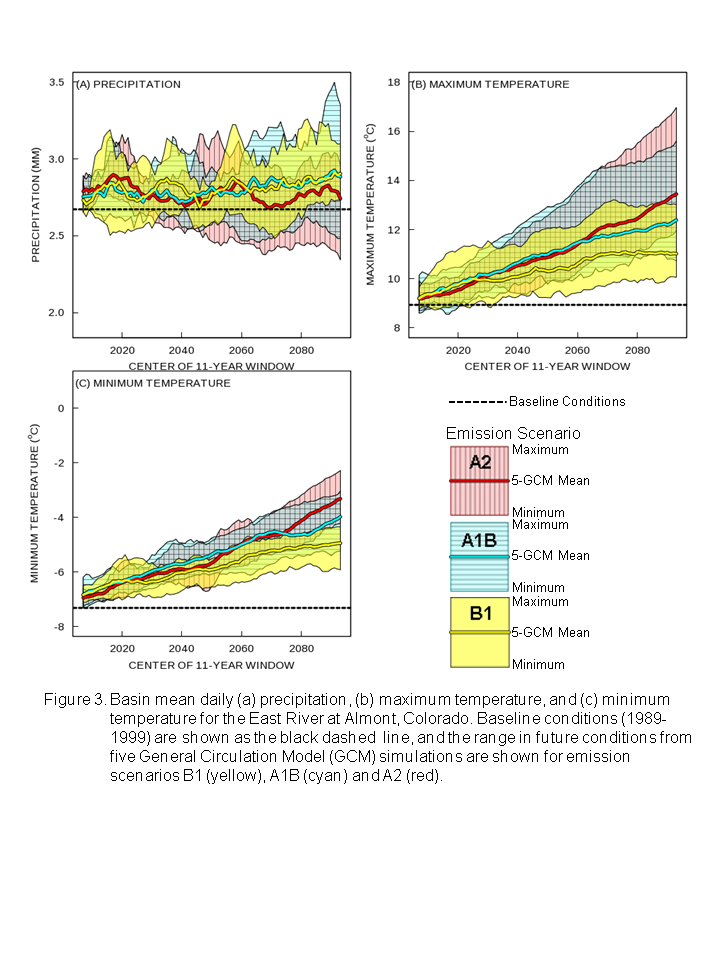Integrated Watershed-Scale Response to Climate Change for Selected Basins Across the United States
Abstract/Summary
A study by the U.S. Geological Survey (USGS) evaluated the hydrologic response to different projected carbon emission scenarios of the 21st century using a hydrologic simulation model. This study involved five major steps: (1) setup, calibrate and evaluated the Precipitation Runoff Modeling System (PRMS) model in 14 basins across the United States by local USGS personnel; (2) acquire selected simulated carbon emission scenarios from the World Climate Research Programme’s Coupled Model Intercomparison Project; (3) statistical downscaling of these scenarios to create PRMS input files which reflect the future climatic conditions of these scenarios; (4) generate PRMS projections for the carbon emission scenarios for the 14 basins; and (5) analyze the modeled hydrologic response. This report presents an overview of this study, details of the methodology, results from the 14 basin simulations, and interpretation of these results.<br />
<br />
A key finding is that the hydrological response of the different geographical regions of the United States to potential climate change may be different, depending on the dominant physical processes of that particular region. Also considered is the tremendous amount of uncertainty present in the carbon emission scenarios and how this uncertainty propagates through the hydrologic simulations.
Publication details
| Published Date: | 2012-03-16 |
| Outlet/Publisher: | U.S. Geological Survey Scientific Investigations Report 2011-5077 |
| Media Format: | URL |
ARMI Organizational Units:
Rocky Mountains - WaterTopics:
DroughtStressors
Water
Place Names:
United StatesKeywords:
climatestressors
water

